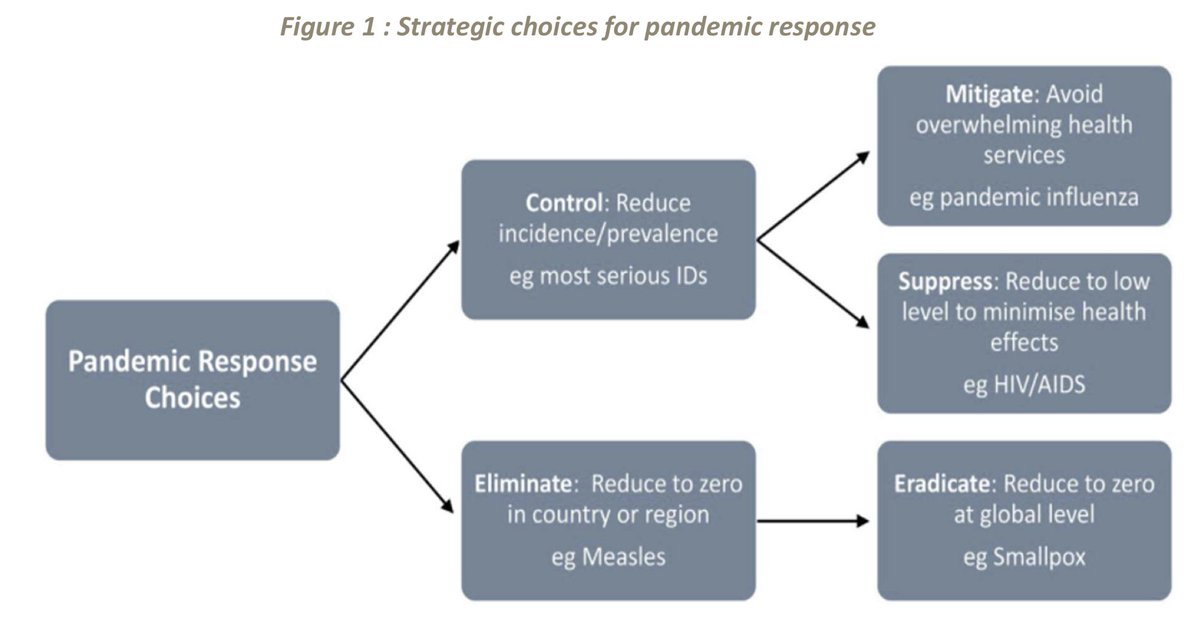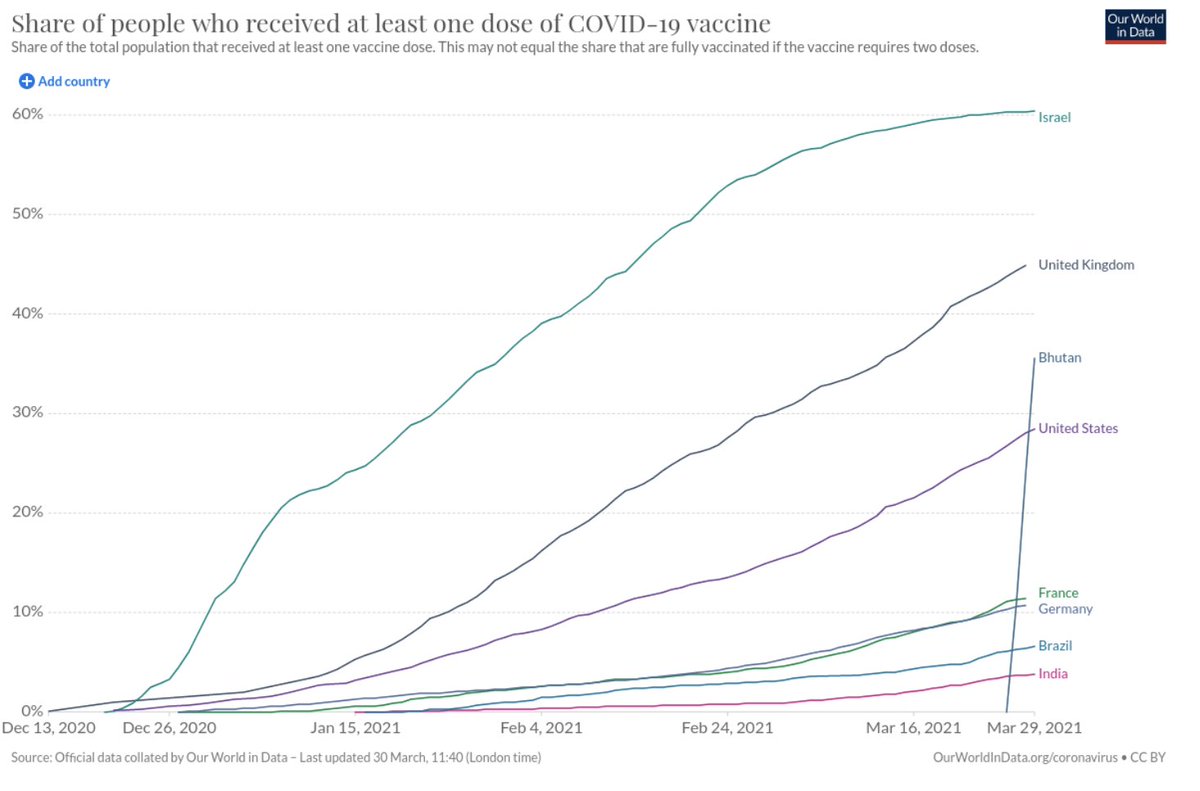
Zero Covid: 42 times fewer deaths and five times less contraction in GDP
"Paris, April 2, 2021: The Zero Covid strategy is by far the most effective way to fight the current pandemic.
/1
"Paris, April 2, 2021: The Zero Covid strategy is by far the most effective way to fight the current pandemic.
/1
"In an original analysis released today, the Institut économique Molinari compares the G10 countries to three OECD countries that have implemented an elimination strategy (Australia and New Zealand) or something similar (South Korea).
2/
2/
"After a Covid-19 fight lasting more than 12 months, the data show the value of the elimination strategy and contradict the idea, that it was necessary to choose between protecting the economy and protecting public health on the grounds that these two goals were in conflict.
3/
3/
"At this stage, experience shows the elimination strategy (Zero Covid) to be more effective in both health and economic terms than the mitigation strategy applied in many countries.
4/
4/
ZERO COVID STRATEGY BENEFITS THE ECONOMY
"Short-term positive effects: Countries pursuing Zero Covid strategy experienced ess severe economic decline in 2nd quarter of 2020 than countries that allowed the virus to spread so that health systems were saturated(-4.5% vs -11.7%)
5/
"Short-term positive effects: Countries pursuing Zero Covid strategy experienced ess severe economic decline in 2nd quarter of 2020 than countries that allowed the virus to spread so that health systems were saturated(-4.5% vs -11.7%)
5/
'The Zero Covid strategy is showing lasting positive effects: In the fourth quarter of 2020, the countries applying this strategy had almost returned to normal economic activity.
6/
6/
Their GDP was down only slightly (-1.2%) compared to 2019. Meanwhile, the decline in GDP was greater (-3.3%) in countries that had not eradicated the virus.
Report “The Zero Covid strategy protects people and economies more effectively” is at:
institutmolinari.org/wp-content/upl…
7/
Report “The Zero Covid strategy protects people and economies more effectively” is at:
institutmolinari.org/wp-content/upl…
7/
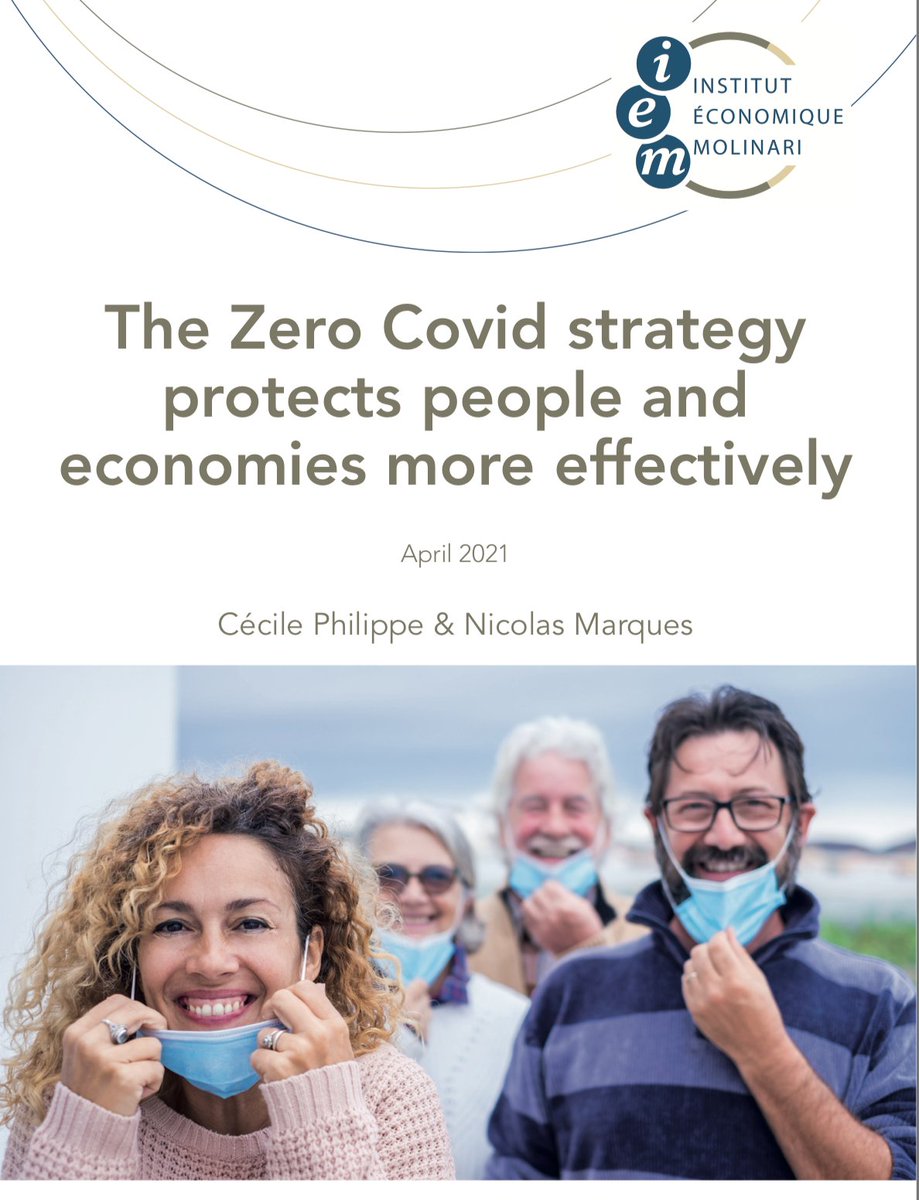
Figure 2 showing the much lower deaths and economic costs of #ZeroCovid .
Arrows (green to right, red and yellow up and to left) show benefits accumulate as return to unrestricted social and economic activity extends over time along with their benefits.
8/
Arrows (green to right, red and yellow up and to left) show benefits accumulate as return to unrestricted social and economic activity extends over time along with their benefits.
8/
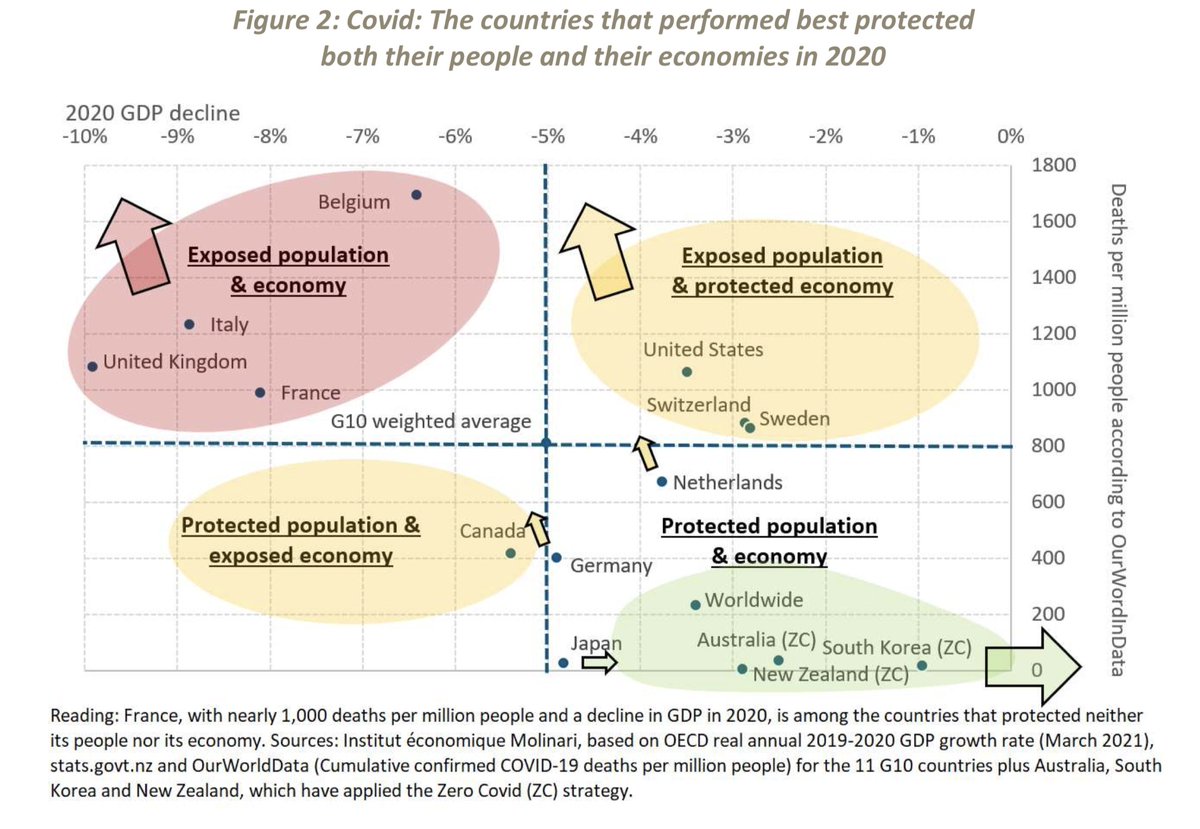
Change in quarterly GDP, Green row shows advantage of the elimination strategy relative to other countries. 

ZERO COVID: MOBILITY THAT STANDS UP BETTER OVER TIME
Table 3: Change in workplace and "leisure and recreation" mobility
Table 3: Change in workplace and "leisure and recreation" mobility
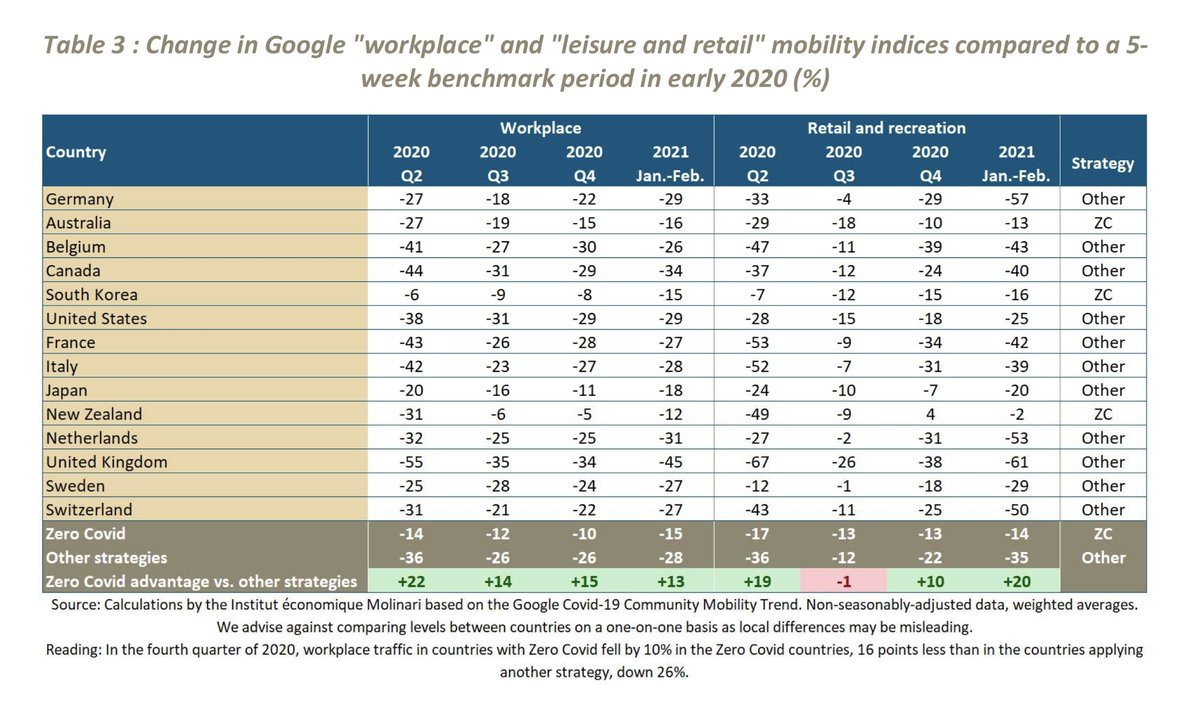
Table 4: The case of Canada comparing different provinces with Zero Covid with other policies.
Green row shows Zero Covid advantage.
Green row shows Zero Covid advantage.
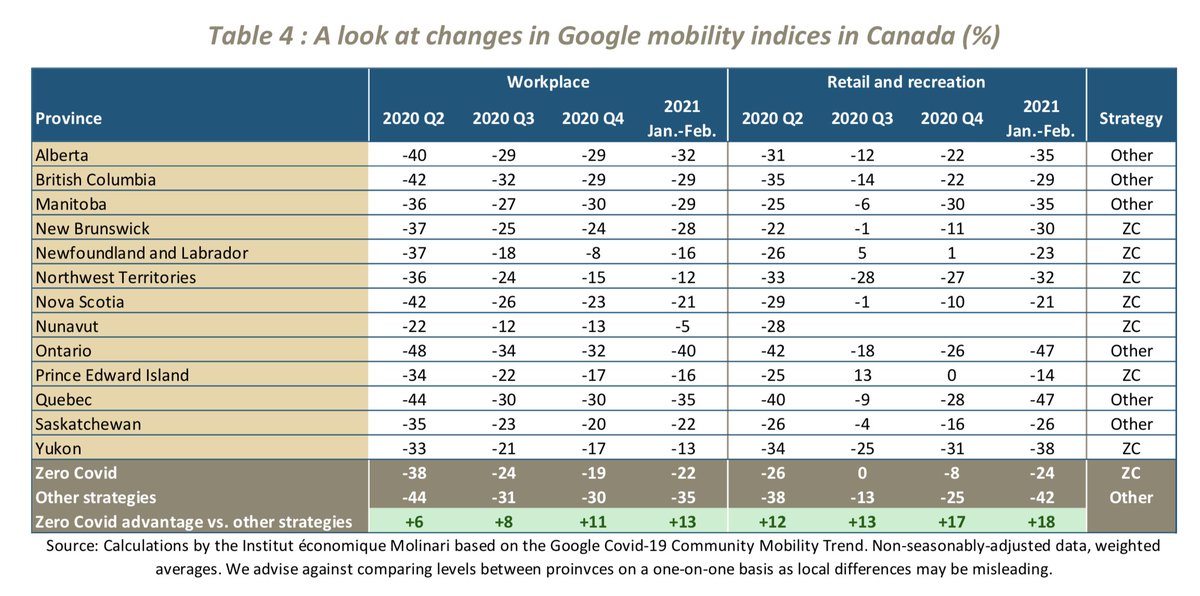
Figure 3: Quarterly dynamics of Zero Covid countries moving toward the green square in the lower right, which is positive GDP growth and low mortality. 

Figure 4: Quarterly dynamics of G10 countries (other than Japan) that did not eliminate the pandemic.
Non of these (other than Japan) is moving closer on a sustained basis to the green square in the lower right corner where there is positive GDP growth and low mortality.
Non of these (other than Japan) is moving closer on a sustained basis to the green square in the lower right corner where there is positive GDP growth and low mortality.
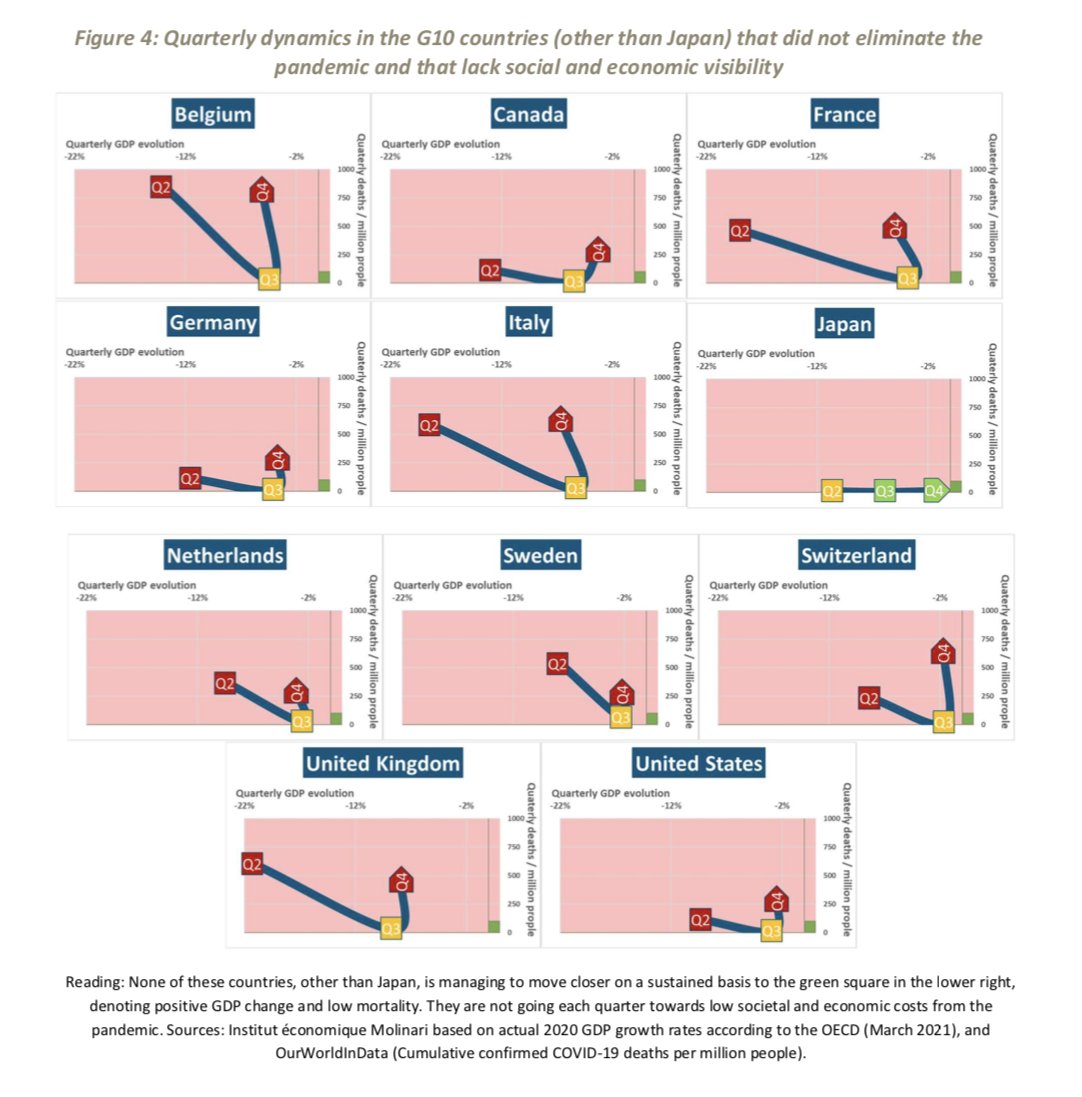
• • •
Missing some Tweet in this thread? You can try to
force a refresh

